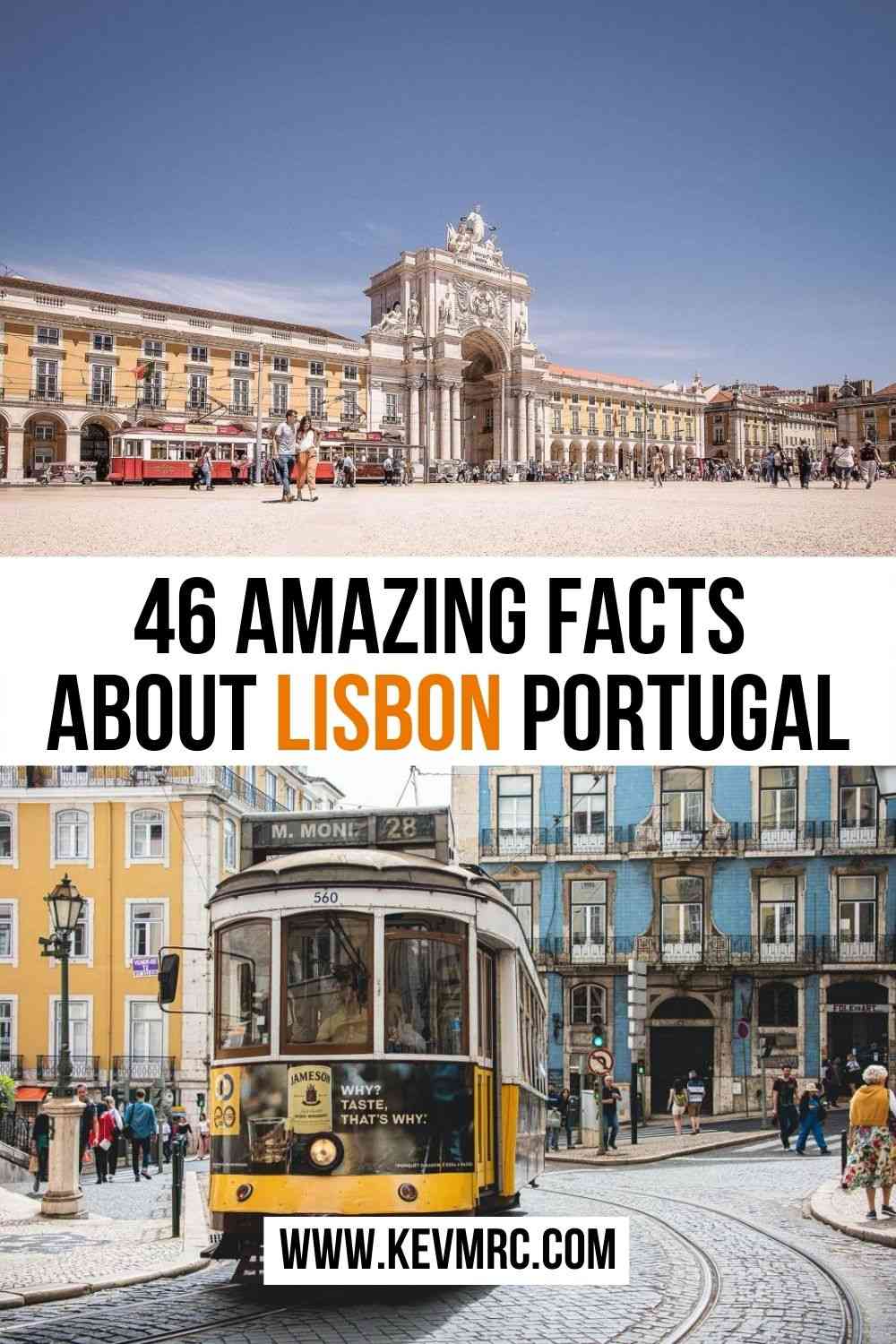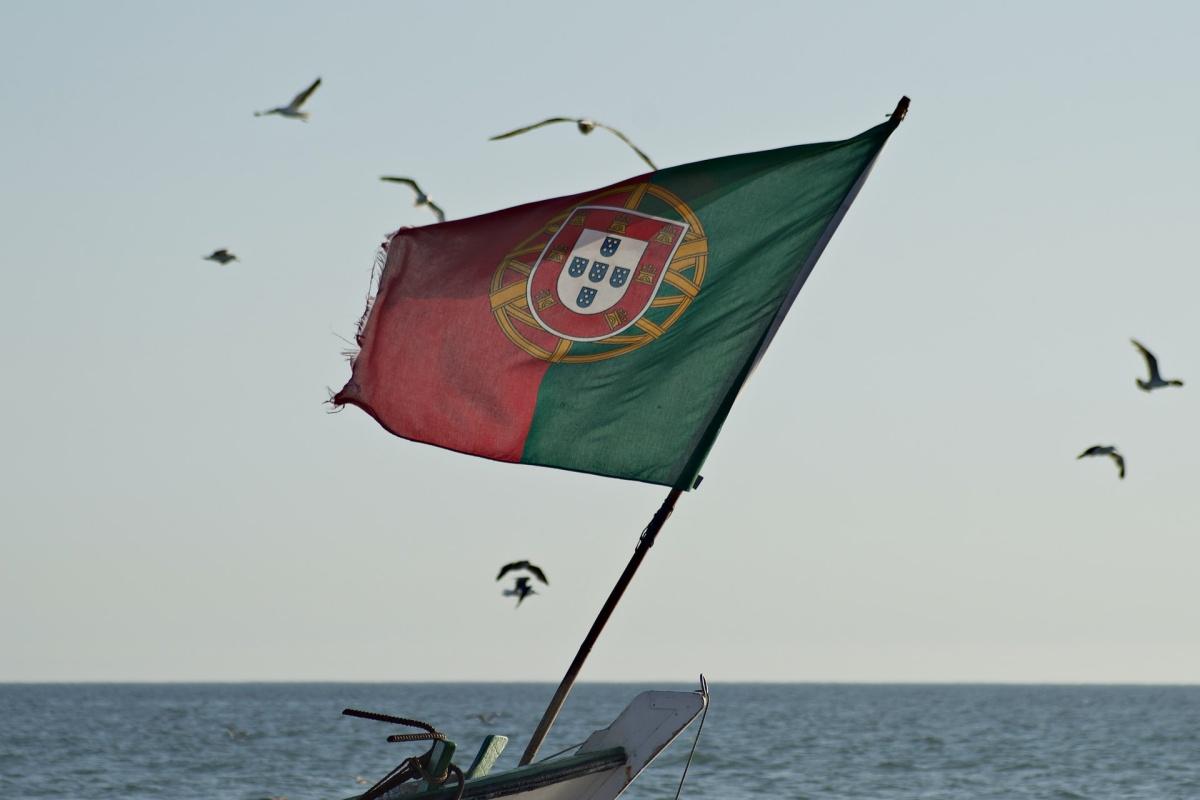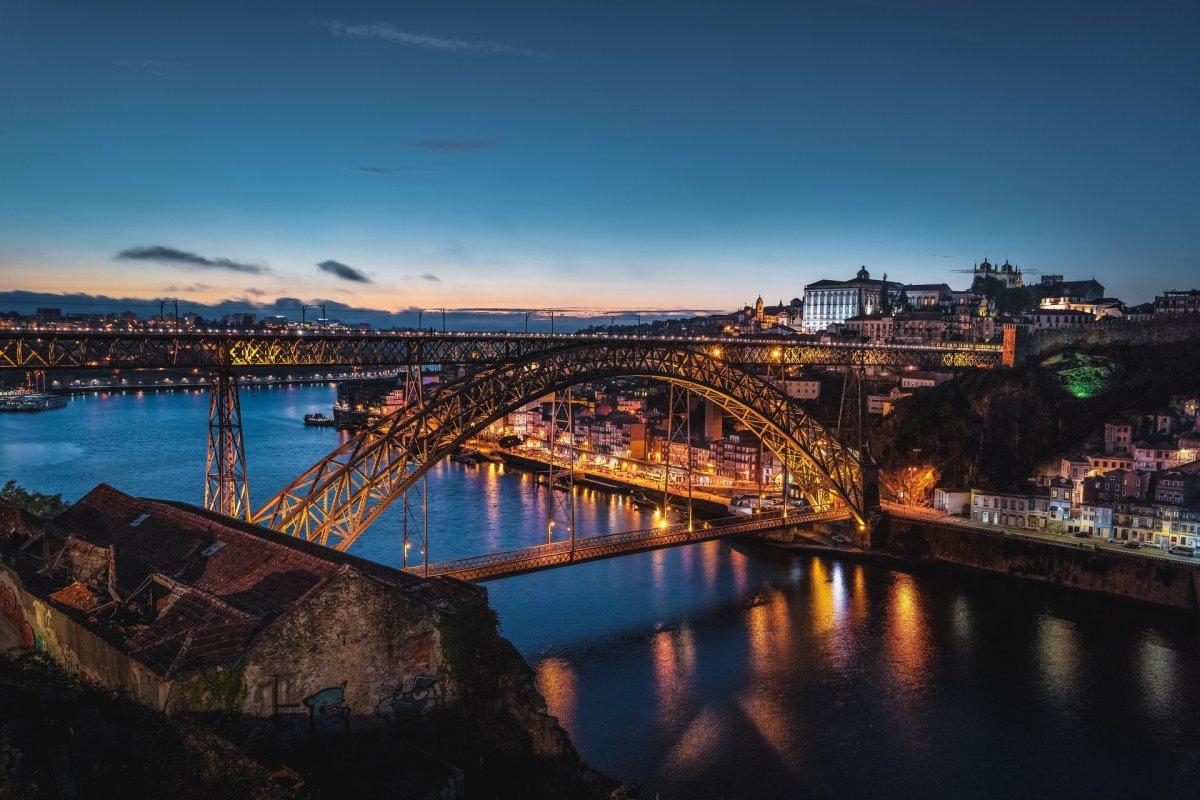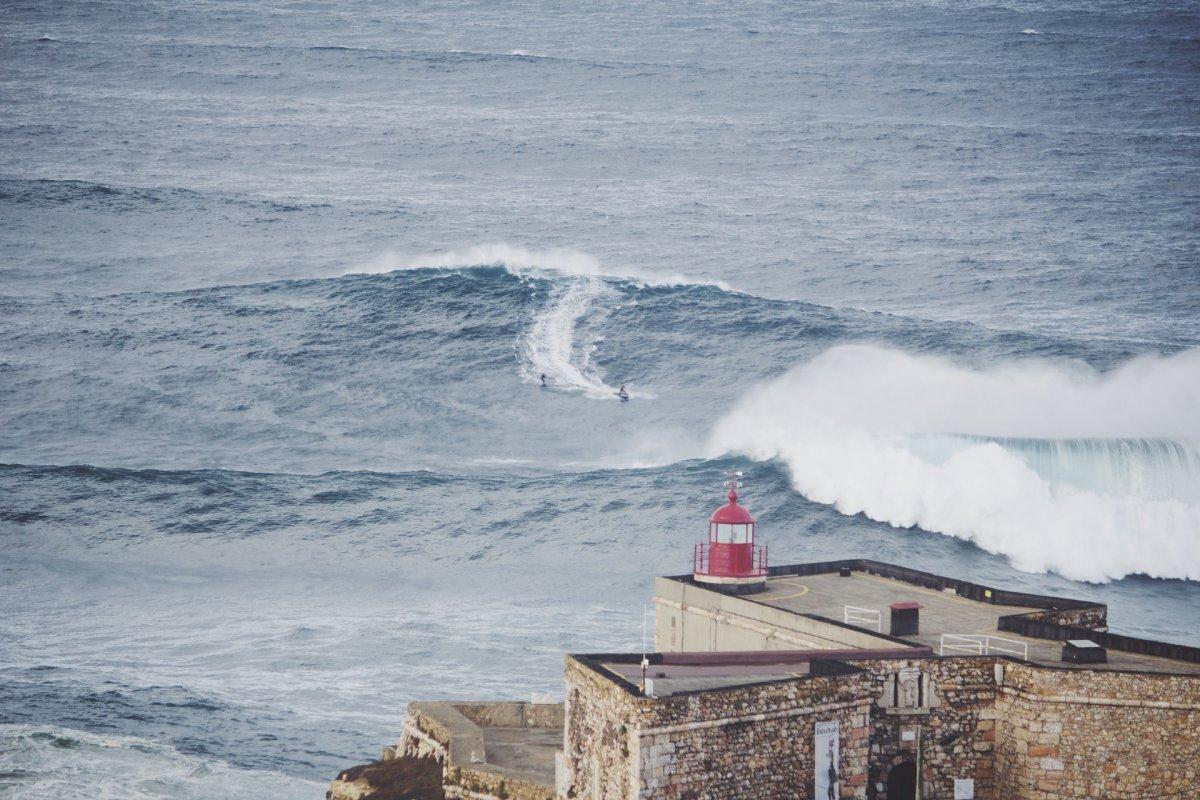46 Interesting Facts About Lisbon, Portugal
Lisbon, Portugal‘s capital and largest city, tops the list of the most popular tourist destinations in Europe. The city of the seven hills has indeed captured the hearts of travelers from all over the world with a unique blend of tradition and modernity.
Did you know that Lisbon isn’t the first capital city of Portugal? Or that the city features a bridge that looks exactly like San Francisco’s Golden Bridge?
Let’s discover together 46 interesting facts about Lisbon Portugal! 🚀
Facts on Lisbon to Learn All About It
Ready to learn all about Lisbon?
Facts are one of the best ways to learn more about something, and I personally love to read them! I’ve put together for you quite a bit of facts on Lisbon; I’ve split them in 4 categories:
- The best Lisbon facts
- Fun facts about Lisbon
- 1755 Lisbon earthquake facts
- General facts of Lisbon
Let’s dive in straight away with our first category!
The Best Lisbon Facts
Lisbon is one of the most interesting and well traveled places in the world. But before you decide to go there for your next vacation, here are some really intriguing facts that I bet you never knew.
1. It is the oldest city in Western Europe.
In fact, if you consider all of Europe, only Athens is known to be older. Lisbon was formed in 1200 BCE by Phonecians, who were primarily sailors and merchants. One of the biggest reasons Lisbon was inhabited so early was because of its geographical location, being on the bank of river Tagus on the Atlantic coast made it the perfect spot.
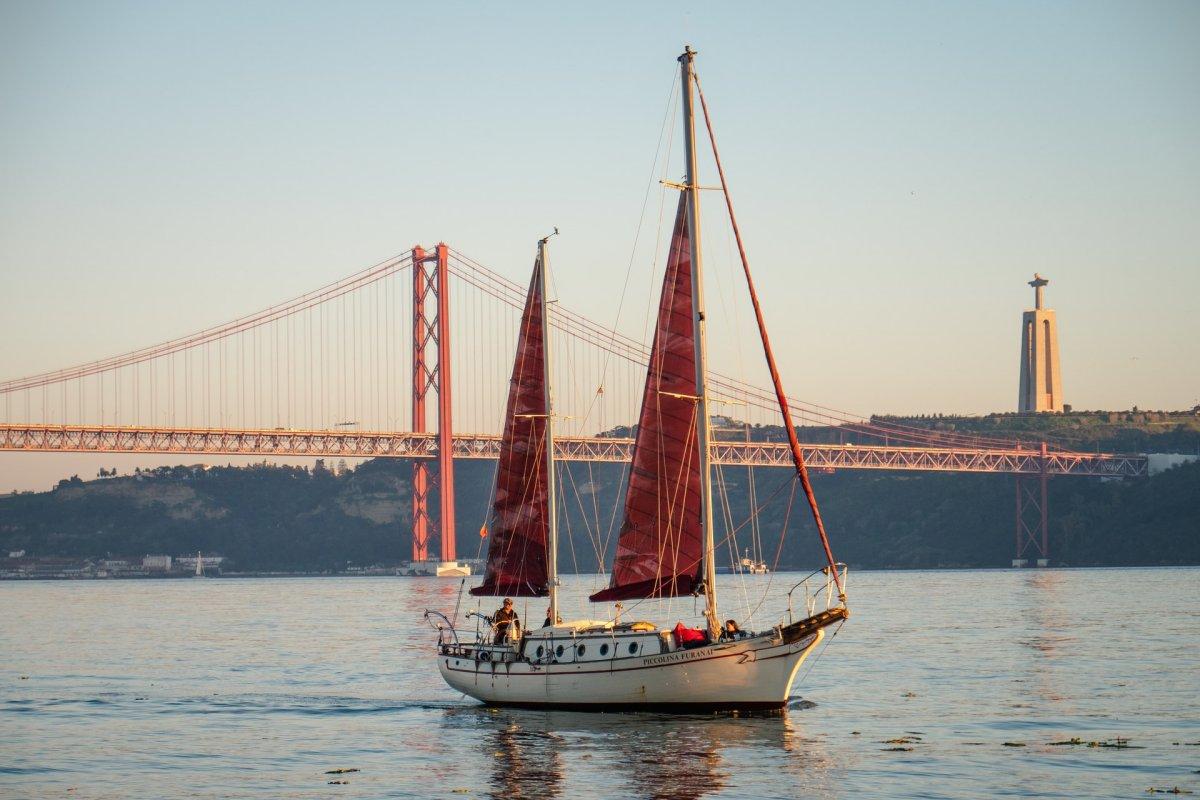
2. It is built on seven hills.
Just like Rome, Moscow and Istanbul, Lisbon is said to have been built on seven hills – namely Santa Catarina, Castelo, Monte, Penha de Franca, Graca, S.Pedro de Alcantara and Estrela. However, there is some debate as to whether there are 7 hills or 8, as some believe it is actually built on 8 hills.
3. The locals of Lisbon can be called either of ‘Lisboetas’ or ‘Alfacinhas’
The people of every city have a particular name for them. Paris has Parisiens, New York has New Yorkers and Lisbon has Lisboetas. But most people don’t know that there is also a second name for Lisboetas. Alfacinhas comes from the Portuguese word Alfachina which means little lettuce. It comes from a time when the locals didn’t have anything to eat other than vegetables and they preferred lettuce.
4. Ravens are the symbol of Lisbon
Ravens have always had cult status in Lisbon. The municipality of Lisbon even kept caged ravens in the Sao Jorge castle. Today, most of the ravens have disappeared. But they are still found on the flags in the city.
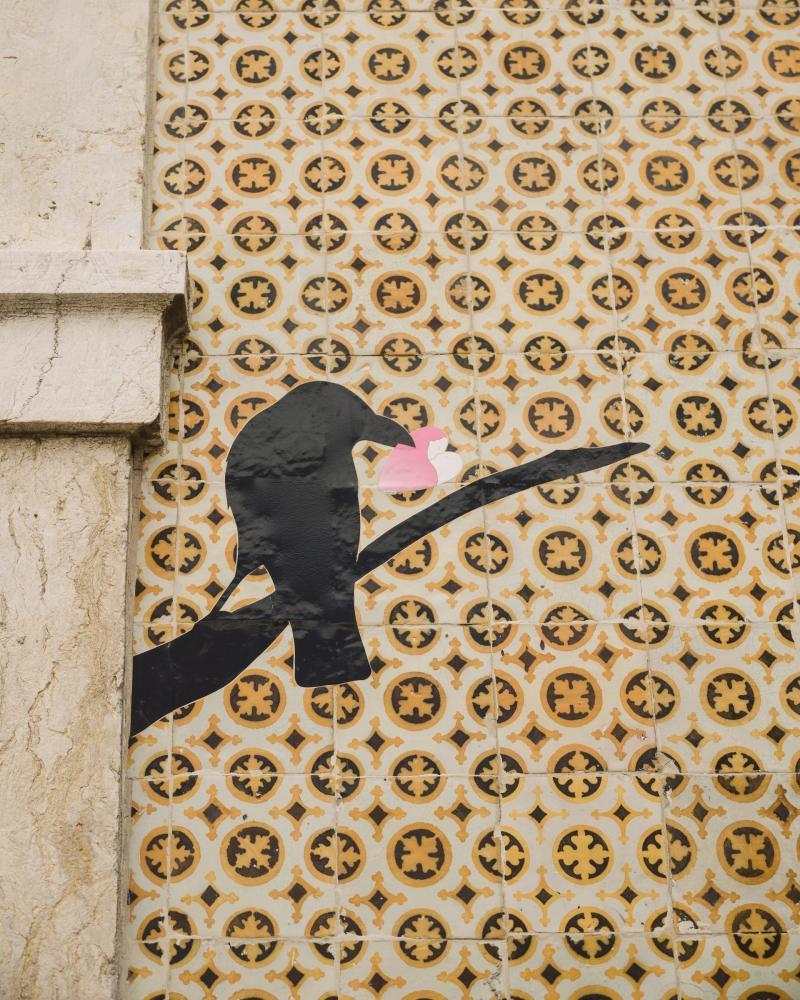
5. Lisbon is famous for its massive bridges
The Vasco Da Gama bridge opened in 1998 is around 7.6 miles or 12km long, making it the longest bridge in the European Union and the second longest in all of Europe. 25th April Bridge, another famous bridge in Lisbon is the longest suspension bridge in all of Europe. This bridge looks a lot like the Golden Gate bridge and is an amazing spot to click pictures.
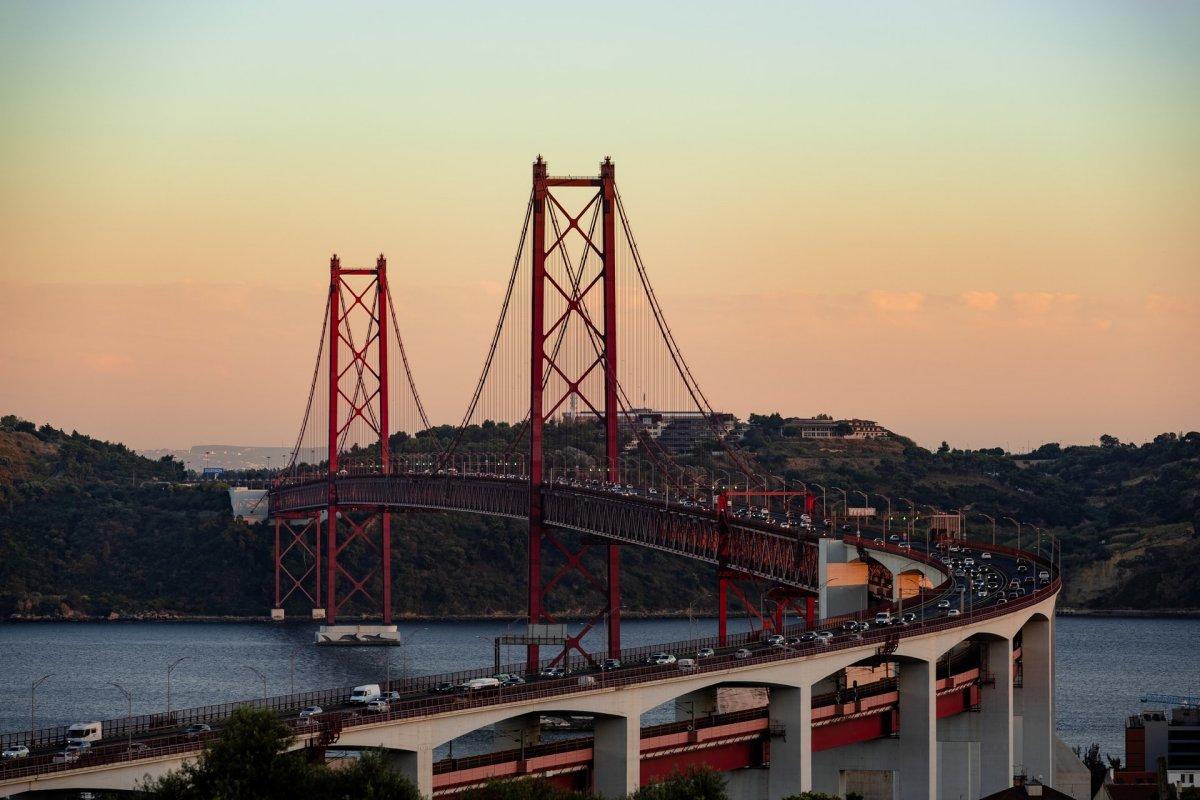
6. Lisbon was once The City Of Spies
Spying during the Second World War was going on in full rage. The fact that Portugal was neutral during the war and Lisbon was one of the most popular ports of entry into Europe made it a hotspot for spy activities. In fact, Ian Fleming, the author of the James Bond series was stationed in Lisbon as a spy for the British Secret Service.
7. The streets are black and white.
Several streets of the city of Lisbon are tiled black and white, like a checkered flag. However, the reason behind this is supposed to be in Sao Vicente. The white represents the clothes of the crusaders and black is the favorite color of Sao Vicente.
8. Football is the first love of the people of Lisbon.
There are about 214 football clubs registered in Lisbon. Portugal on the whole loves the sport and has produced some of the greatest footballers of all times including the likes of Eusebio, Cristiano Ronaldo and Luis Figo. But the biggest clubs in Lisbon are SL Benfica and Sporting CP.
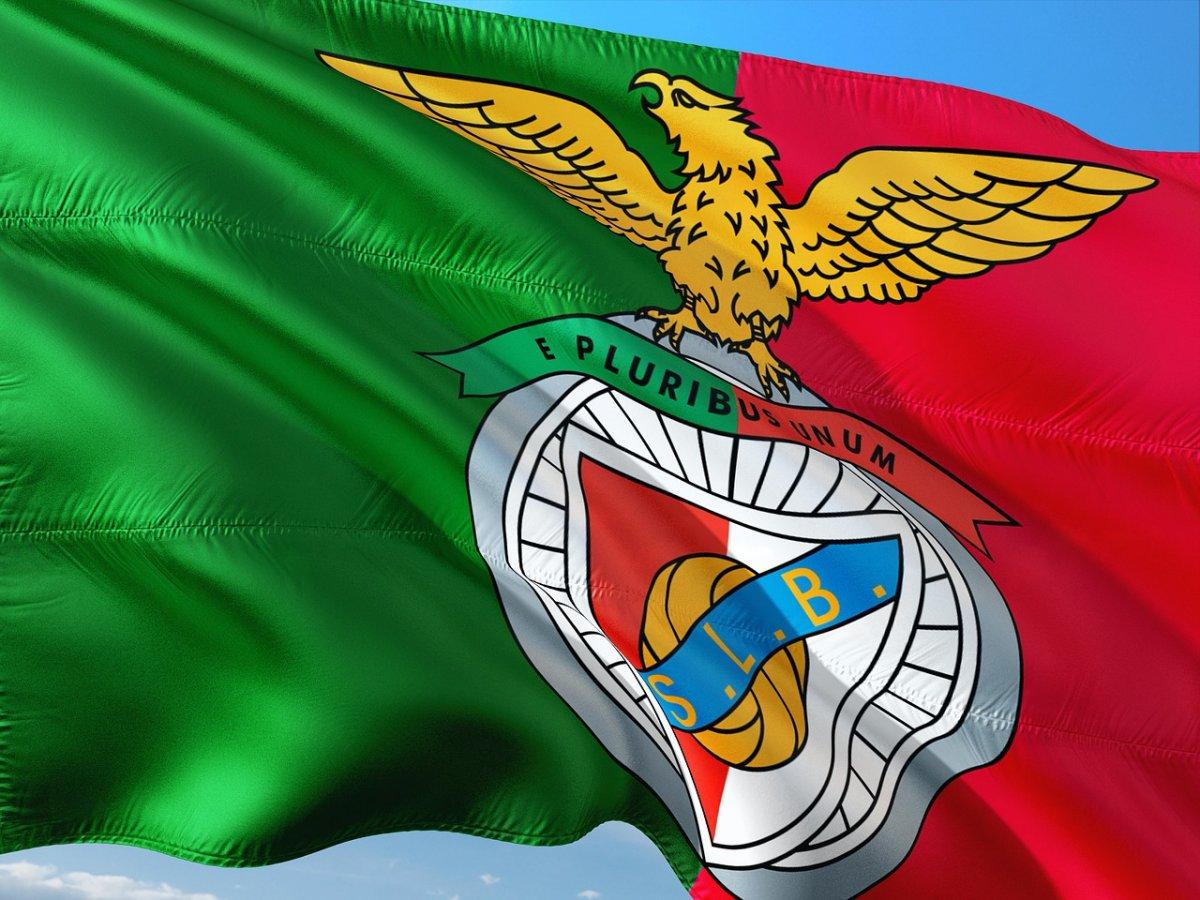
SL Benfica official flag
9. The trams in the city were called Americanos.
Trams are one of the most popular forms of public transport in Lisbon. They were brought to Lisbon from the USA in the 19th century. Hence, they were given the name Americanos.
10. However, the most famous Tram in Lisbon is British made.
Tram number 28 is one of the best rides in the city. The picturesque yellow tram was built in England, back in the 20th century using polished wood and chrome.The tram is very popular and travels up and down the steepest streets of the city.
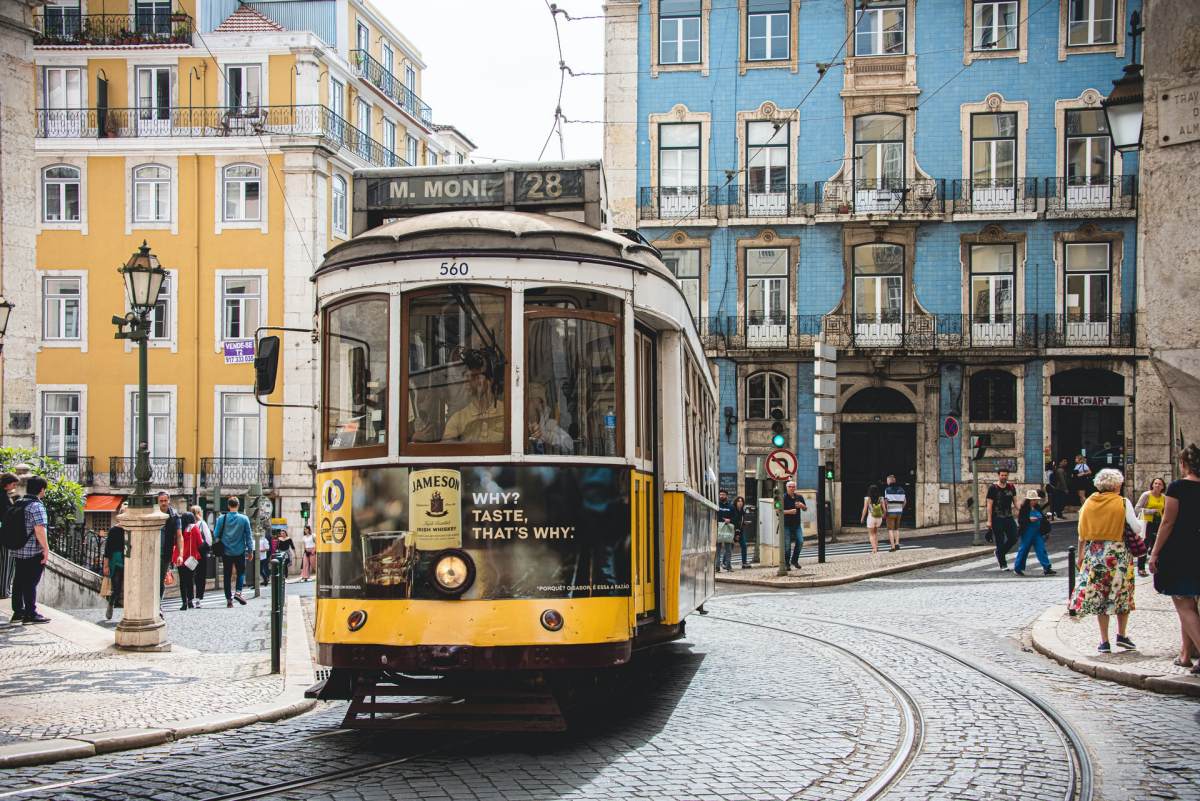
11. The largest temporary stage was built in Lisbon.
As weird as it may sound, in 2007, the largest temporary stage, measuring a whopping 7276 square meters, was made in the Benfica Stadium to host the declaration of the Seven Wonders of the world.
12. Lisbon has a love affair with books.
Or at least with bookshops. Lisbon is home to the world’s oldest bookshop, a store by the name of Livraria Bertrand that has been selling books since 1732. But what’s even more intriguing is the fact that it is also home to the smallest bookstore in the world, called Livraria do Simão, a shop that is less than 35 sq ft in area.
13. The famous Belem Tower was once a prison.
The gorgeous Belem Tower, known officially as the Tower of Saint Vincent is a 16th century structure that is a must in any Lisbon tour. It was built during the Age of Discoveries as a military fortification. But something that very few people know is that it was used as a political prison in the Liberal Wars of the 19th century.
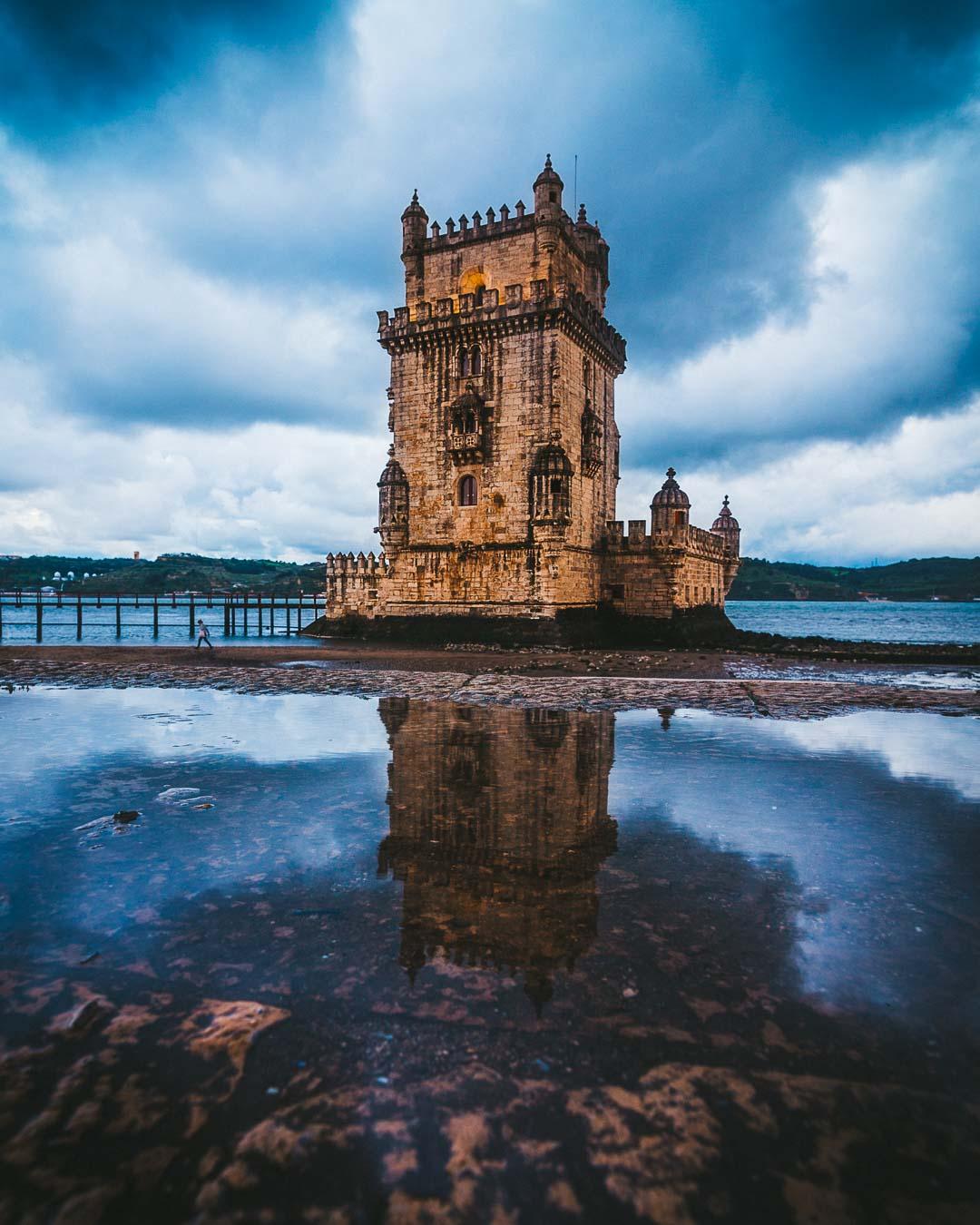
14. A church in Lisbon took nearly 300 years to complete construction.
The Santa Engracia church, now known as the Panteao Nacional, is a church that holds the Guinness world record for the long duration between the beginning time of construction to the completion of the construction, starting from 1681 and completing in 1966. If you are wondering why it took so long, well there’s a ton of reasons – from curses to dead architects among other reasons.
15. One of Lisbon’s greatest tourist sights is The Ascensor de Santa Justa.
The Ascensor de Santa Justa is a street elevator that has attracted tourists for years. It connects people from Baixa to the Chiado district, which is about 45 meters above the former.
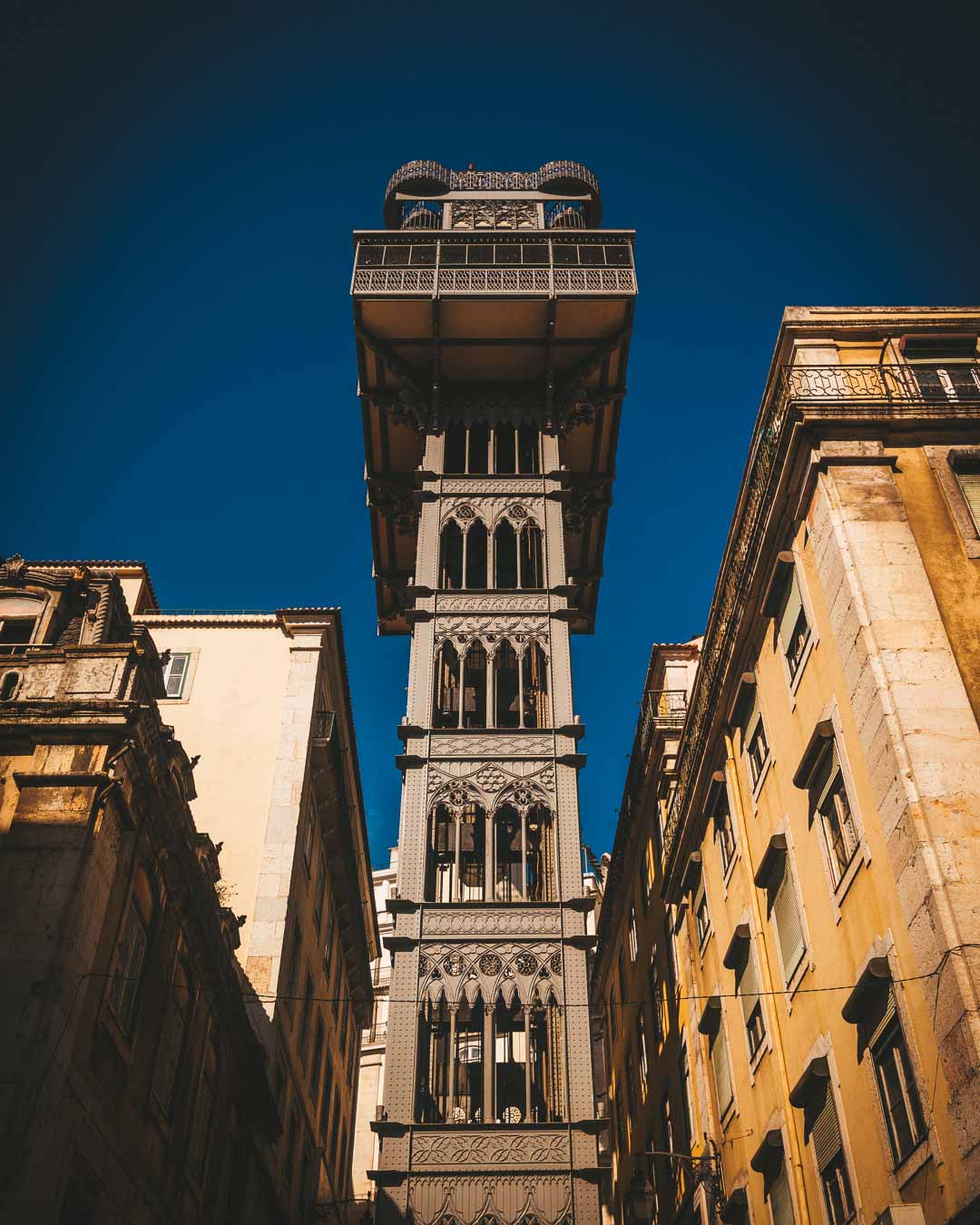
16. The biggest casino in Europe is in Lisbon.
As far as casino’s go, Casino Estoril in the south of Lisbon is a treasure trove for history. Built after the first World War, it has been in operation for over 100 years now. The casino was rumored to be a secret hideout for spies and fugitives during the second war. Ian Fleming is said to have based Casino Royale on this very casino.
17. The World’s Largest Salt Water Oceanarium is in Lisbon.
Oceanario de Lisbon, a tourist hotspot, is a massive aquarium located in Lisbon. It is home to four marine habitats as well as tropical, temperate and cold waters. There are all sorts of animals that can be found here, including mammals, birds, invertebrates, amphibians and even some plants and algae.
18. The recipe for Lisbon’s most famous pastry is a secret.
One of the most popular pastries to come out of Lisbon is the Pasteis de Belem or Pastel De Nata. It’s a custard tart pastry with cinnamon dusting. Only 5 people know the actual recipe of the original tart and it is not written anywhere, they know it just by heart. As a result, the 5 of them never travel in the same car or aircraft.
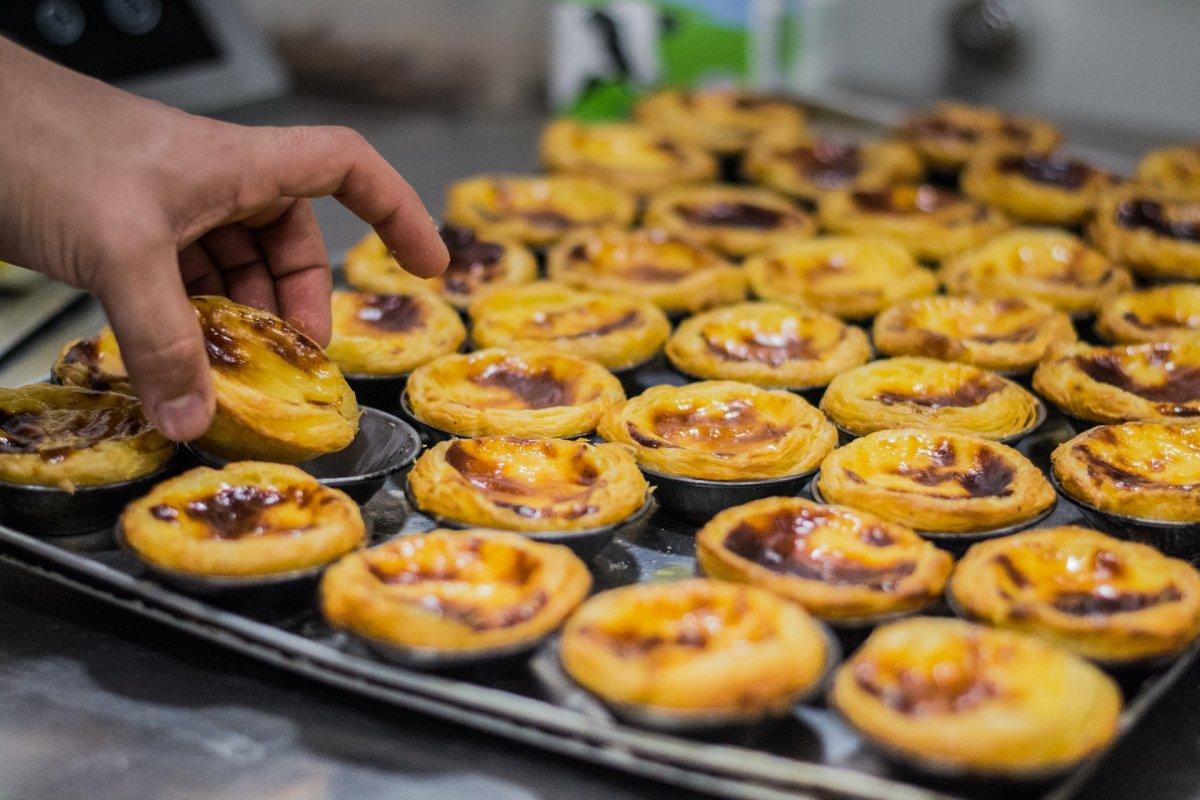
19. The Largest Human National Flag (at the time) was raised in Lisbon
In 2006, a whopping 18,788 people got together to raise the Portuguese National Flag at the Estadio Nacional. The feat has since been beaten by the likes of Bangladesh and India.
20. Lisbon is considered as one of the first cities to buy Guinness beer.
The famous Irish beer that can be found all across the globe was first exported to the city of Lisbon. Paperwork suggests that it was in the year 1811 that Lisbon was importing Guinness from Dublin, making it the first city to do so.
21. Lisbon has its own variation of Christ the Redeemer.
The Cristo Rei or Christ the King statue is another major tourist attraction. It is a catholic monument that overlooks the city, just like Christ the Redeemer in Rio De Janeiro, Brazil, from which it was inspired. It was built to commemorate Portugal’s survival in WWII.
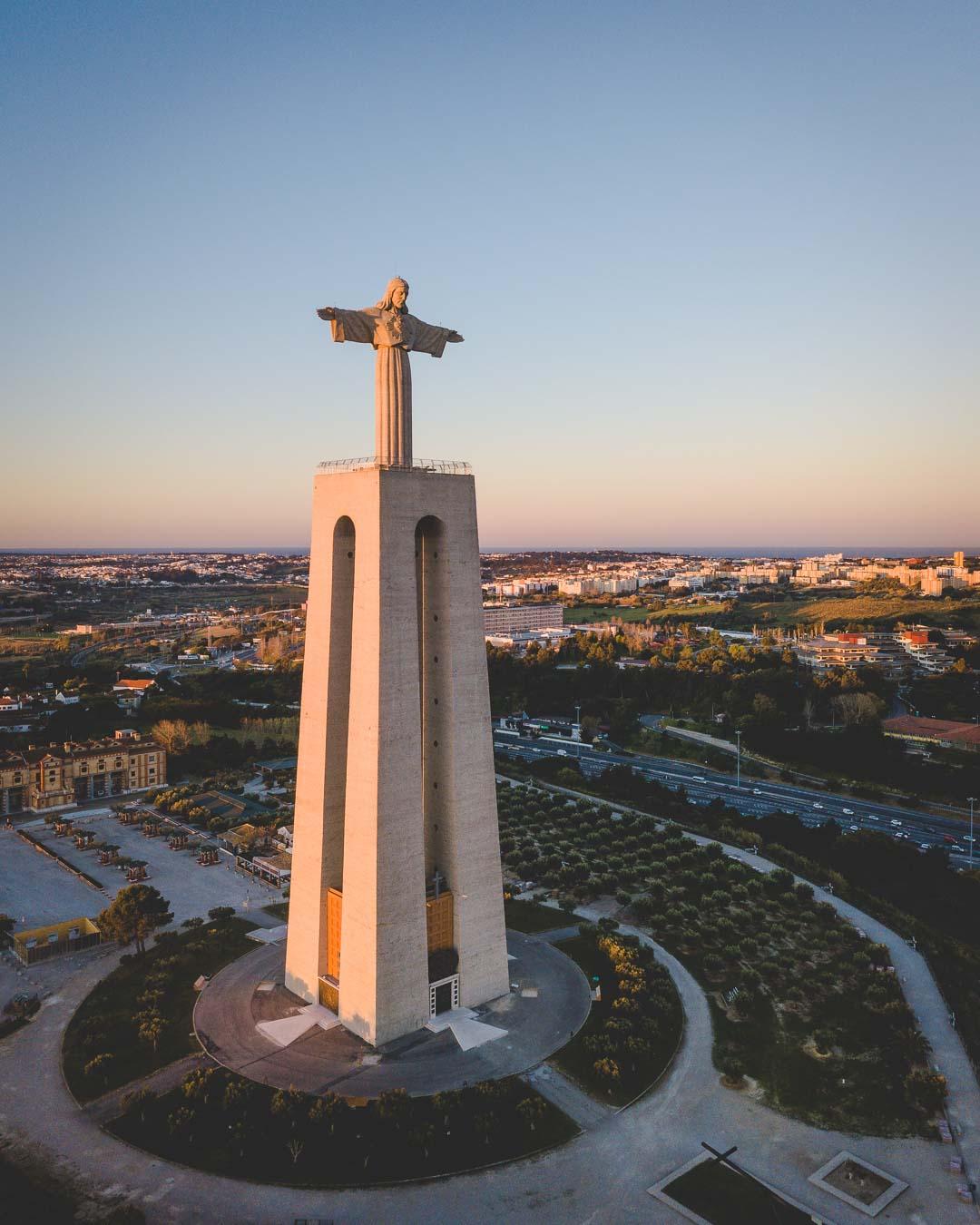
22. The Portuguese Empire lasted 600 years, more than any other European empires in modern times.
Like most European countries, Portugal colonized several countries during the last millennium. At the height of its glory, the Portuguese Empire expanded to around 53 countries. Brazil got its independence from Portugal in 1822, while North African colonies were freed by 1975. The last Portuguese colony, Macau, was handed over to China in 1999.
23. Lisbon has some of the most eclectic museums in the world.
While most cities in Europe are full of all kinds of museums, Lisbon holds the unique distinction of having some of the most eclectic museums out there- Tiles, Coaches, Fado, Design, Costumes, Ethnology, News – you name it . There is a museum of Azulejos – which are artistically painted and decorated tiles. There is also the museum of Dermatology, which holds face masks that show the effects of various diseases on a person’s face.
24. You can walk on an aqueduct in Lisbon.
The Aqueduto das Águas Livres is an aqueduct in Lisbon and is a hidden gem for tourists. This UNESCO world heritage site is a 19km long aqueduct, has survived natural calamities and can give you some stunning views of Lisbon.
25. The streets of Lisbon have terrific graffiti that has been attracting tourists for years.
A walk in the city of Lisbon will let you know exactly what I mean. The city has a lively street art scene which has allowed local artists to attract themselves in a very exposed way. The Shadow Man near the Picoas metro station is a prime example of such street art. Some graffiti artists choose to raise poignant political points via their artwork as well, like Ninja vs Oil giants graffiti right outside Picoas metro station.
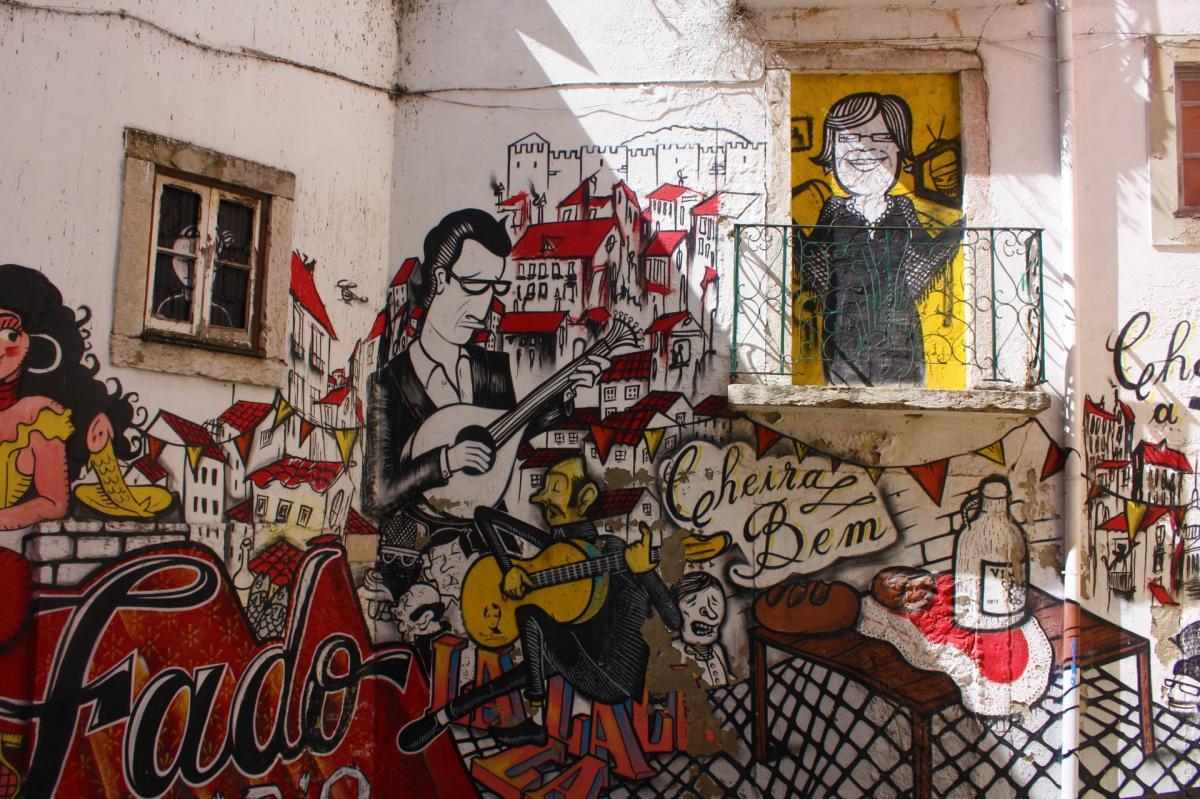
26. The Treaty of Lisbon gave the European Union full legal personality.
The amendment of two existing treaties which were the basis of the constitution of the European Union, was signed in the year 2007 and came into effect from 1 December, 2009. The treaty formalized the parliament of the European Union in an unprecedented manner.
27. At one time, it was common to spot Dolphins in the Tagus river.
The Tagus river, which flows through the city of Lisbon, is another tourist attraction. It was very popular because it was common to spot dolphins swimming in the river. Today, due to climate change and pollution, there are very few dolphins left in the river. So their sighting is an even bigger occasion.
28. The shopping district has streets named after the traders.
Downtown Lisbon, known as Baxia, is the place for shopping in the city. It is also the major banking district of the city. The area is gorgeously decorated and has a bunch of pastry shops, tiled shop fronts, tailors, etc. The baroque streets are named according to the shopkeepers and craftsmen who traded in the area.
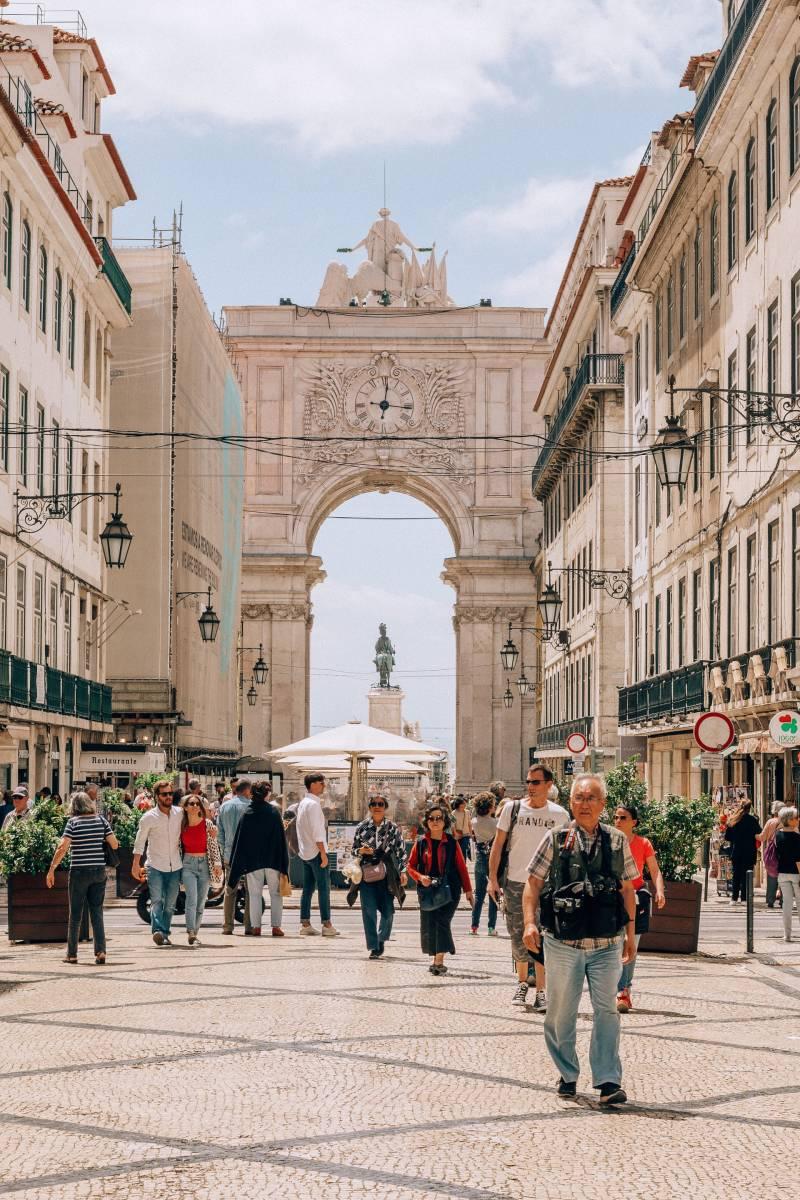
29. Lisbon is the birthplace of the Fado genre of music.
Fado, which means destiny, is the traditional music of the people of Lisbon. The songs in this genre are generally melancholic, with tones of nostalgia about the sea and the life of poverty. You can learn a lot about the music in the Fado Museum.
30. Lisbon’s love affair with seafood is as old as the city itself.
Lisbon, being so close to the sea, is well known for its seafood. You can get salade de polvo (octopus salad), pastéis de Bacalhau (cod fritters) and caracóis (snails) very commonly in the city. Lisboetas also love their chargrilled fish such as cherne (wreckfish), garoupa (grouper), and salmonetes (red mullet).
31. Lisbon is known as the ‘city of light’.
Lisbon is called the city of light because of the amount of sunlight it receives. The city reportedly has around 220 days of sunlight, which accompanied with the city’s bright blue skies and open brightness makes the city shine like few others. This makes the city a top tourist destination as well.
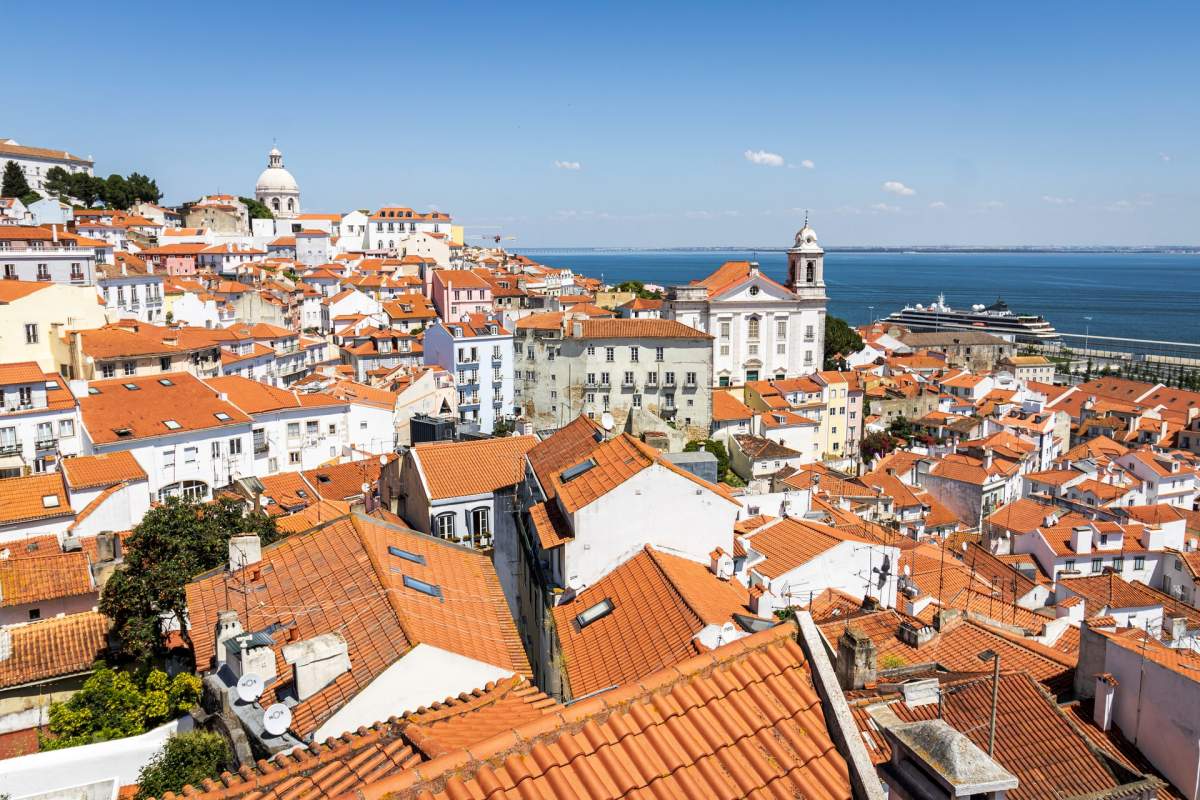
32. One of the most “expensive” chapels in the world can be found here in Lisbon.
Sao Roque Church in Lisbon has been deemed as the most expensive church in the world because of how much gold has been used in the decorations of the church. What’s surprising is that the church looks like any other plain old church from the outside. But on the inside you can find the chapel adorned with gold baroque architecture. Even the paintings and the frescoes are absolute masterpieces.
33. The metro stations in Lisbon are museums in themselves.
People traveling to the city of Lisbon via metro for the first time get a surprise when they find that the metro stations are almost like mini museums. The walls are decked with gorgeous azulejos which depict important stories and events from Portuguese history. The sketches at Alto dos Moinhos, the blue dome at the Parque station and the panel “Arrival” at Restauradores are prime examples of this.
These were some of Lisbon Portugal facts. I hope you know a bit more about the city than before you started reading.
Fun Facts About Lisbon
Do you think you know everything about the amazing city that is Lisbon? Well, then you are in for a surprise. There is even more Lisbon fun facts you need to know.
34. Lisbon was not always the capital of Portugal.
As mentioned, Lisbon is one of the oldest and most influential cities in all of Portugal. However, it wasn’t always the capital of Portugal. Gulmaraes was the first capital of Portugal, followed by Coimbra.
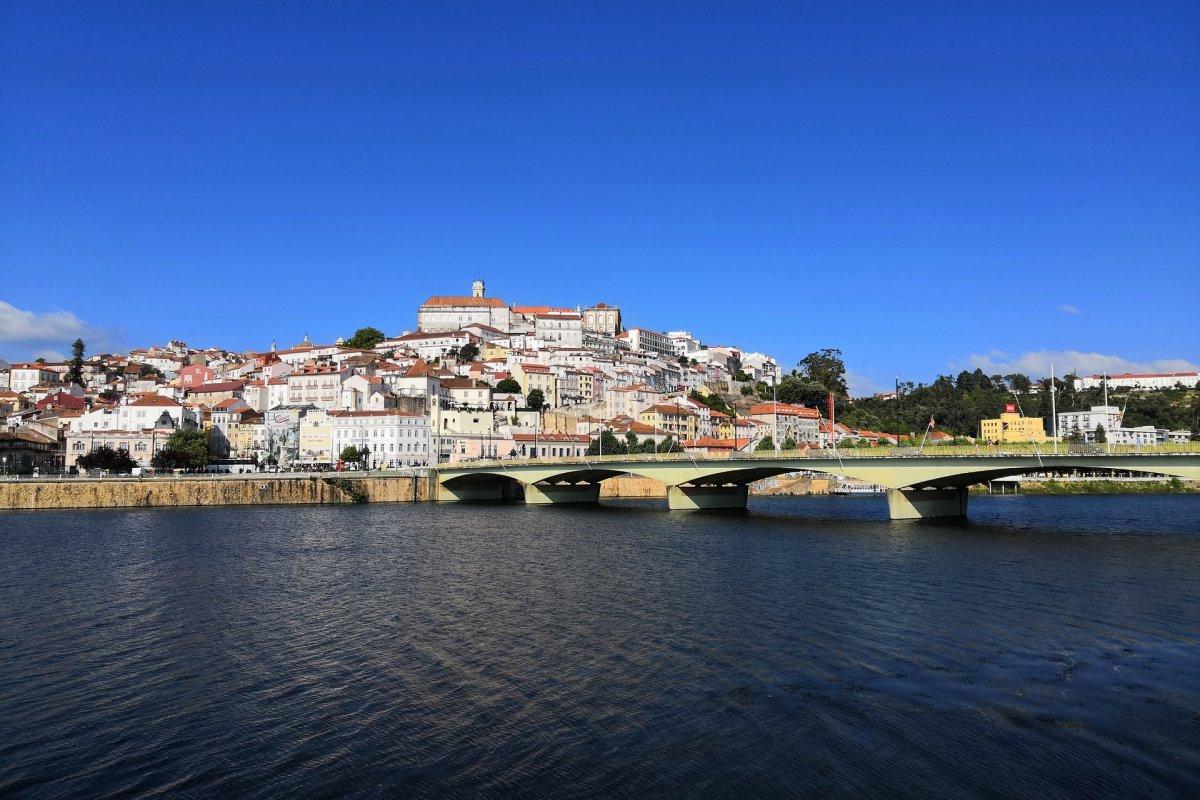
Coimbra
35. Castelo de St Jorge is nearly 2000 years old.
One of the most popular tourist destinations in all of Lisbon is St George’s Castle. It is a magnificent structure with sturdy battlements., a very engaging museum and architecture that will leave you mesmerized. If you visit Lisbon with your family, this is a must see. The first fortifications of the hill on which this is built date back to 1st century BCE. However, in its current form, it was built in the year 1386 ACE.
36. The Jeronimos Monastery was built to commemorate the successful voyage of Vasco da Gama to India.
The Jerónimos Monastery or Hieronymites Monastery is a gorgeously decorated monastery, located in Western Lisbon. It is a prominent example of the Portuguese Late Gothic Manueline style of architecture that can be found in Lisbon. It was commissioned by King Manuel I in 1496. It was declared a UNESCO World Heritage site in 1983.
37. One of the most common souvenirs that you take from Lisbon is canned fish.
As strange as that may sound, it is a fact. You can find all kinds of canned fish in Lisbon -anchovies, sardines, tuna and mackerel. They are packed beautifully in tin cans and look like beautiful gift packs.
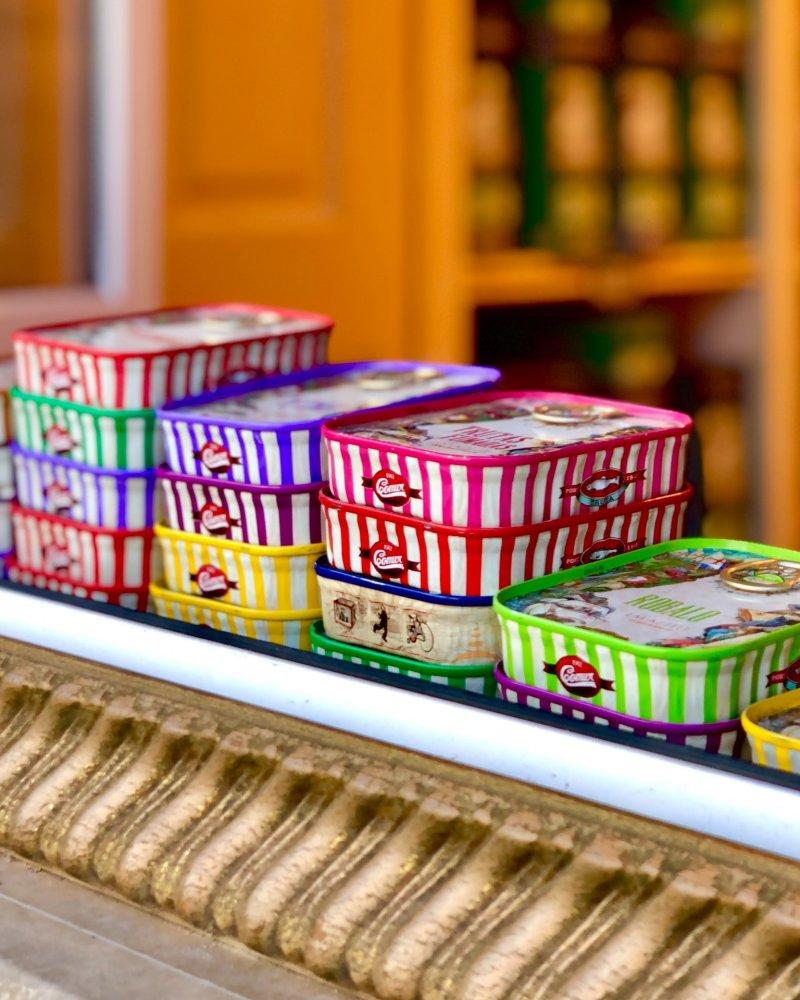
38. Lisbon’s favorite drink is known as Ginjinha
Lisboetas love their liquor. While Guinness can be found commonly, the locals do love their Ginjinha, a locally made sweet liqueur made by soaking Ginja berries in alcohol and sugar. On your next trip to Lisbon, this one is a must try.
39. The renowned Rossio square has a very bloody and messy past.
One of the most well known places in all of Lisbon is the Rossio Square. The official name of the area is King Pedro IV square. It is known to have hosted intellectuals and commoners for hundreds of years. But what a lot of people don’t know is that Rossio square was used as the spot for public executions in Lisbon.
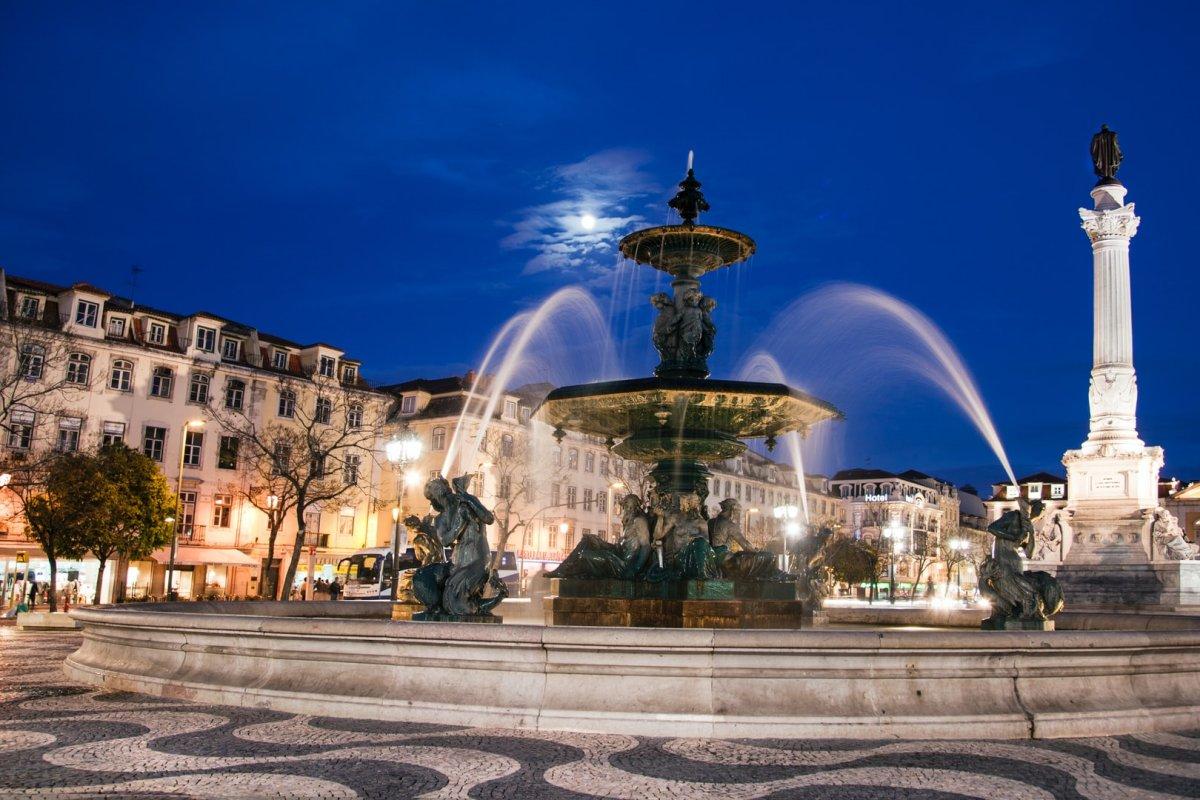
Praça do Rossio
40. There is a Rhino in the Belem Tower.
Not a real one, no. But there is a statue of an Indian Rhino in the Belem Tower. I know what you are thinking, “how can there be a Rhino in Belem Tower, the animal was unheard of in the area at the time the tower was built”. As it happens, the Rhino was a diplomatic gift.The Rhino traveled all across the country and had a few different owners in its lifetime. It even inspired a few structures and paintings across Europe.
Lisbon is a city full of surprises and a ton of fun for everyone. The more you know about the city, the more you realize how fascinating it is.
1755 Lisbon Earthquake Facts
While you have read some Lisbon history facts previously, there is still something we haven’t even touched. And this is probably the biggest event in the history of Lisbon.
41. The city of Lisbon was demolished by a massive earthquake in the year 1755.
Known as the Great Lisbon Earthquake, the earthquake completely devastated the city of Lisbon on November 1. Most areas of the city were affected, including the commercial center – Praça do Comércio. The Royal Ribeira Palace was one of the monuments that were destroyed in the earthquake.
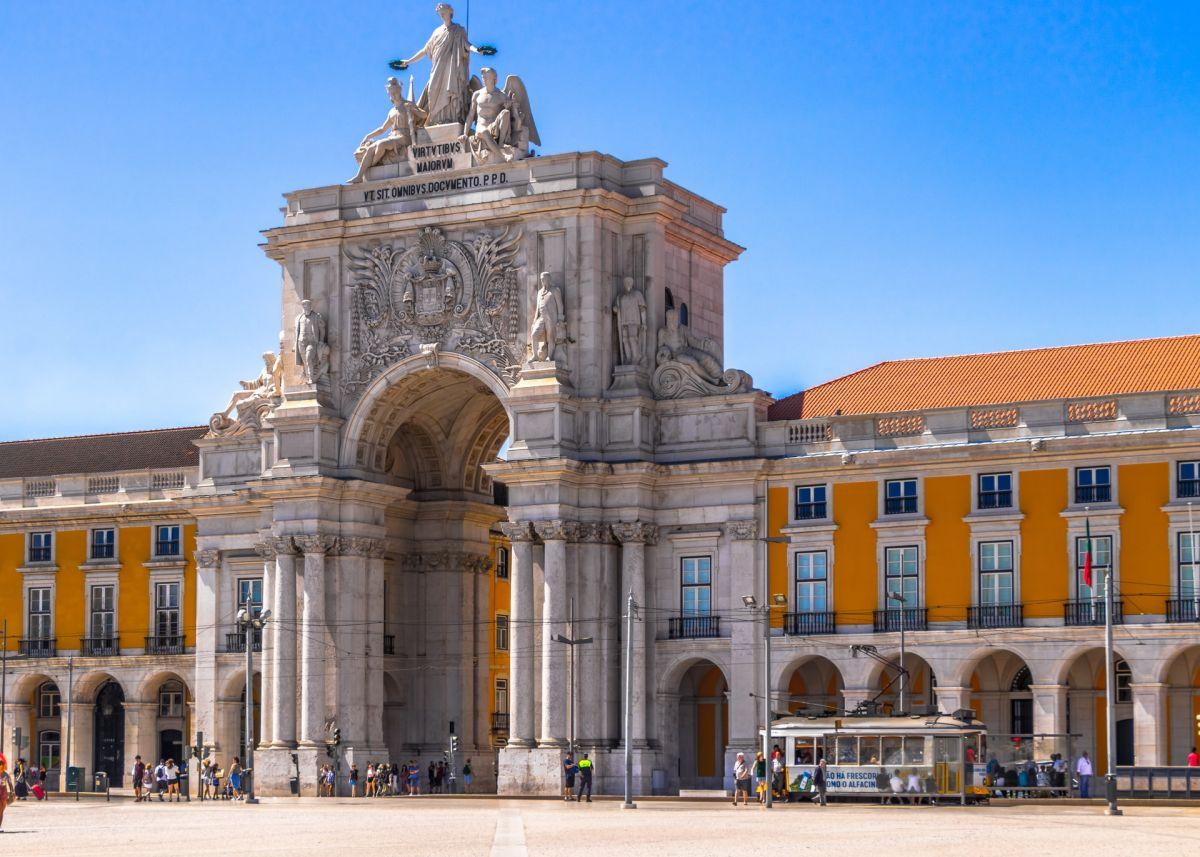
Praça do Comércio
42. The earthquake is believed to have read 8.4 on the moment magnitude scale.
This makes the earthquake one of the most havoc wreaking events of its time. The earthquake was followed by a Tsunami and fires breaking out all over the city. Carmo convent, a structure that stands today without a roof is a haunting reminder of the damage caused.
43. The death toll is estimated to be around 30,000-40,000.
Lisbon’s population at that time is estimated to be nearly 200,000. So nearly 20% of the population lost their lives. Additionally, around 10,000 people lost their lives in Morocco. The Rossio square was completely destroyed by the earthquake as well.
44. The impact this earthquake had on the economy was huge.
The loss of life and property compounded to a greater effect on the economy of Portugal on the whole. The booming economy of the time was depleted by 32 to 48%. Over the following few years, despite there being several regulations, the wages and prices remained quite volatile.
45. The earthquake led to the discovery of Galerias Romanas.
Once the city was leveled by the earthquake, the restoration projects began. However, it was during these restoration that it was discovered that there lay an entire city under the streets of Lisbon. A small metal hatch was discovered in the middle of a street which led to the city of Galerias Romanas. It is still there and you can visit it, but only a few days in a year.
46. The rebuilding efforts have given us some new and amazing sights.
Lisbon rose from the ashes of the earthquake like a phoenix. Buildings made were tested for being earthquake resistant. The Praça do Comércio was remodeled as part of the rebuilding of Pombaline downtown. This is how the Baxia Pombaline as we know today came into being.
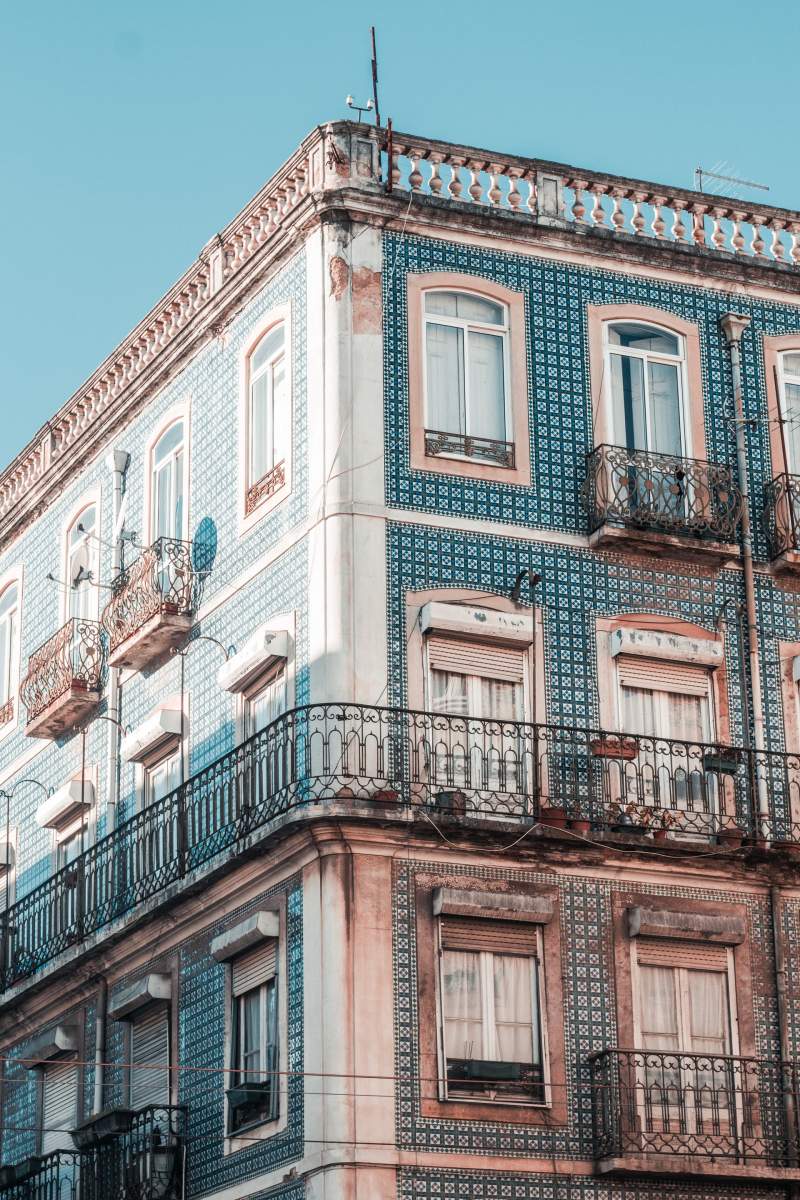
Typical Pombaline-style building in Lisbon
We see that despite the enormity of the earthquake and its after effects, the people of Lisbon never lost their true spirit and the civilization that has developed since has been just as glorious.
General Facts of Lisbon
You’ll find below a few general facts of Lisbon, to learn more about this Portuguese city:
- Name: Lisbon| Lisboa(Portuguese)
- Province: Lisbon Metropolitan Area
- Region: Lisbon Region
- Land area: 100.05 km2 / 38.63 sq mi
- Population: 508,368
- Name of inhabitants: Lisboeta | Alfacinhas
- Website: www.cm-lisboa.pt
Lisbon Flag
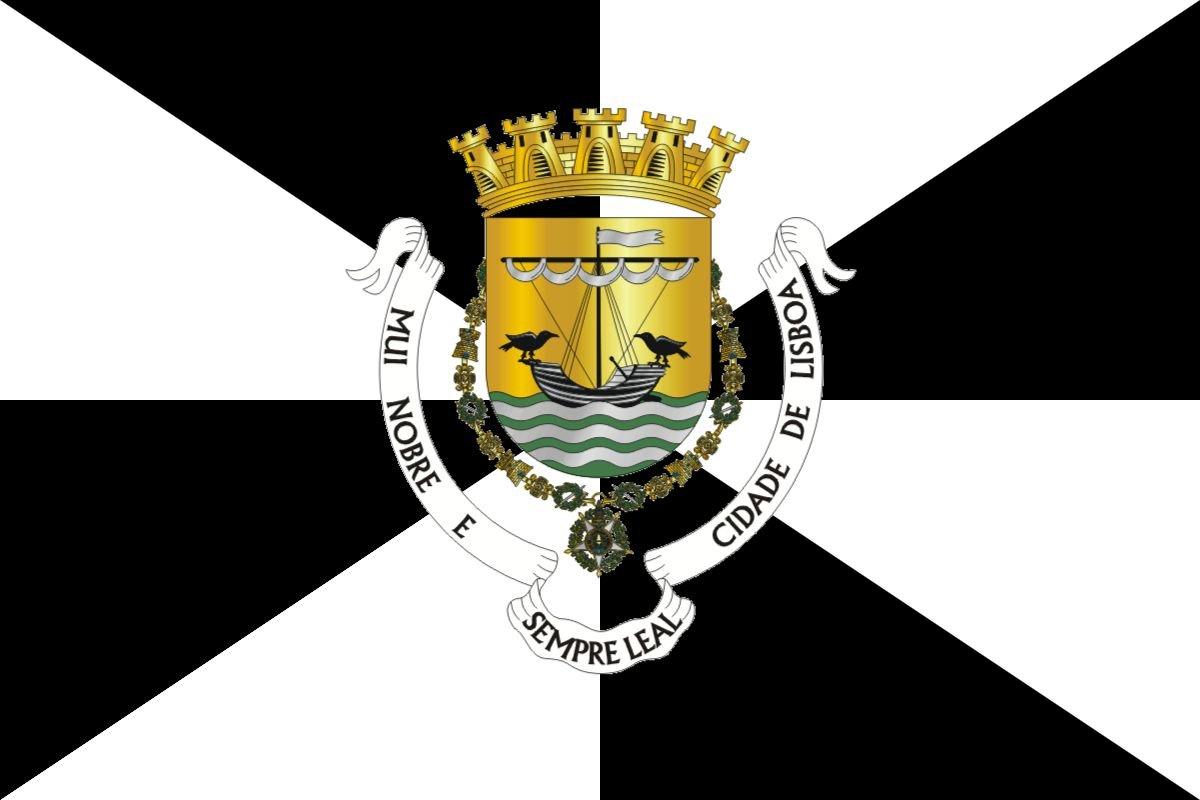
More Facts!
Loved these facts about Lisbon in Portugal? Well, here are some pieces you’ll certainly enjoy as much as this one.
Here is the main guide of the best Portugal facts 👉 60 Best Facts about Portugal
And here are other Portugal facts posts that might interest you:
Or click here to see ALL the facts up on the blog! Spoiler alert: there’s A LOT of them.
The Full List of 46 Lisbon Facts
- It is the oldest city in Western Europe.
- It is built on seven hills.
- The locals of Lisbon can be called either of ‘Lisboetas’ or ‘Alfacinhas’
- Ravens are the symbol of Lisbon
- Lisbon is famous for its massive bridges
- Lisbon was once The City Of Spies
- The streets are black and white.
- Football is the first love of the people of Lisbon.
- The trams in the city were called Americanos.
- However, the most famous Tram in Lisbon is British made.
- The largest temporary stage was built in Lisbon.
- Lisbon has a love affair with books.
- The famous Belem Tower was once a prison.
- A church in Lisbon took nearly 300 years to complete construction.
- One of Lisbon’s greatest tourist sights is The Ascensor de Santa Justa.
- The biggest casino in Europe is in Lisbon.
- The World’s Largest Salt Water Oceanarium is in Lisbon.
- The recipe for Lisbon’s most famous pastry is a secret.
- The Largest Human National Flag (at the time) was raised in Lisbon
- Lisbon is considered as one of the first cities to buy Guinness beer.
- Lisbon has its own variation of Christ the Redeemer.
- The Portuguese Empire lasted 600 years, more than any other European empires in modern times.
- Lisbon has some of the most eclectic museums in the world.
- You can walk on an aqueduct in Lisbon.
- The streets of Lisbon have terrific graffiti that has been attracting tourists for years.
- The Treaty of Lisbon gave the European Union full legal personality.
- At one time, it was common to spot Dolphins in the Tagus river.
- The shopping district has streets named after the traders.
- Lisbon is the birthplace of the Fado genre of music.
- Lisbon’s love affair with seafood is as old as the city itself.
- Lisbon is known as the ‘city of light’.
- One of the most “expensive” chapels in the world can be found here in Lisbon.
- The metro stations in Lisbon are museums in themselves.
- Lisbon was not always the capital of Portugal.
- Castelo de St Jorge is nearly 2000 years old.
- The Jeronimos Monastery was built to commemorate the successful voyage of Vasco da Gama to India.
- One of the most common souvenirs that you take from Lisbon is canned fish.
- Lisbon’s favorite drink is known as Ginjinha
- The renowned Rossio square has a very bloody and messy past.
- There is a Rhino in the Belem Tower.
- The city of Lisbon was demolished by a massive earthquake in the year 1755.
- The earthquake is believed to have read 8.4 on the moment magnitude scale.
- The death toll is estimated to be around 30,000-40,000.
- The impact this earthquake had on the economy was huge.
- The earthquake led to the discovery of Galerias Romanas.
- The rebuilding efforts have given us some new and amazing sights.
Share the knowledge! Click on the buttons below to share these facts with your friends, and help them learn more about the world 🙂
Pin this to Pinterest!
Enjoyed this guide? Then help a fellow traveler and pin it! They'll most definitely love you for it, 100% guarantee.
